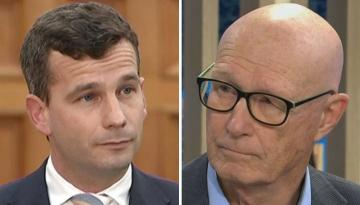Foodbanks which rely on leftovers from school lunches to feed communities are worried a plan to pare the programme back will lead to more hungry children.
They're calling on the Government to put some of the more than $100 million its cutting from the lunches scheme into food banks.
At Nourished for Nil in Hastings, every week there's a queue for food packages of rescued kai and leftover school lunches. The not-for-profit is finding more Kiwis needing their help.
One person collecting a parcel said they liked getting the spare lunches.
"It's fantastic because half the time I don't have to cook for myself because I cook different meals because of what they can eat, so I get the lunch and then it's easy for me."
Nourished for Nil founder Christina McBeth said the current free school lunches made a difference on families' budgets.
"It does take the pressure off families having to provide an extra meal for their children and it might be the difference between a child not having any hot meals that day."
Associate Education Minister David Seymour - who is in charge of the school lunch programme - wants to make it cheaper.
"We've got to be realistic, it's not the education system or the school's job to feed a child 24/7," he said.
Seymour said the lunches, which are set to change next year, would be "very similar to what the other 75 percent of parents are putting into school lunch boxes".
He's previously said the changes would mean less "quinoa, couscous and hummus, it will be more like sandwiches and fruit".
McBeth and other foodbanks have told Newshub changes to school lunches will mean more hunger because they're expecting the meals to be less nourishing and that there won't be leftovers to feed others.
They want to see some of the more than $100 million being cut from the lunches programme to go to food banks.
Seymour said the savings would go back into the Government's general Budget.
In a pre-Budget announcement, the Government announced it would redesign the programme to make it cheaper and extend it to some low-income children at early childcare centres.



